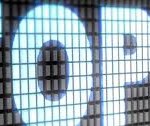In the world of trading, we know there are at least three types of gaps: runaway, breakaway, and exhaustion. When we integrate the world of human behavior with trading dynamics, we can find an entirely different kind of “gap”: behavior gaps. As traders know all too well, sometimes the biggest obstacle we must overcome in our quest for profit is the person who stares back at us in the mirror!
Behavioral Economist (and distinguished Duke University professor), Dan Ariely, is the author of the 2008 book: Predictably Irrational: The Hidden Forces that Shape Our Decisions. In that book, Dr. Ariely documents the countless ways in which, contrary to classic economic theory, human beings often do not make economic decisions rationally. One of the many manifestations of this “behavior gap” identified by Ariely occurs when some fundamental news about a company (such as a huge earnings surprise) catches the market by surprise. At that point, countless investors find it extremely difficult to adjust their perception and expectations to integrate this new reality—a new reality that implies a major shift in future prospects. Investors become mired in their existing “bias”, and their market “behavior” regarding this stock is slow to change.
One simple example of this is Apple Computer (AAPL). Despite a chart that looks abysmal (AAPL moved from a closing high over $702 on September 19th, 2012, tumbling to a closing low just over $390 (close) on April 19th of this year – a fall of over 44% in just 7 months) many of my “trading buddies” found it impossible to stop trading AAPL with the same strategies they had used during the prior four years (in fact, some still haven’t fully “adjusted” their bias).
Proving once again that a shrewd investor can exploit any “edge”, Ralf Scherschmidt and his team created a mutual fund that specifically seeks out companies currently suffering from the effects of Ariely’s “market bias”: Oberweis International Opportunities Fund (OBIOX). During the most recent six-month period (ended 6/30/13), Ariely’s thesis has served Scherschmidt and his shareholders very well! During that period, Morningstar rates OBIOX’s 20.88% return as #1 within the “foreign small/mid growth” category! To demonstrate its exceptional relative performance, consider that the #2 fund (Oppenheimer International Small Co. A (OSMAX)) returned only 13.69% during the same period.
To be fair (and provide perspective) small company growth stocks as a category have outperformed since January. As you can see in the graph below, the Russell 2000 Growth Index has outperformed the S&P 500 Index pretty handily this year – especially since the start of May.
CHART: for the chart above, the red line is the price action for the S&P 500 Index. The blue area shows the trend in the Russell 2000 Growth Index.
Scherschmidt has not let his success lure him into complacency. He realizes that he and members of his team are very human, and therefore subject to all the faults and foibles that accompany “humanhood”. That is why he insists that he and all team members reread Ariely’s book at least once each quarter! That will not immunize them from “bias”; but it does help them maintain a constant vigil in trying to avoid it!
Commenting on the psychological dynamic of equity “surprises” within market pricing, Scherschmidt says: “If the market did understand the underlying fundamentals, there wouldn’t be a surprise in the first place. It takes the market a long time to incorporate new information into stock prices. People’s original belief about a business gets proven wrong, but the initial human reaction is to resist a change in belief. That’s what we can take advantage of.”
Applying Ariely’s premise within the investment market, Scherschmidt and his team perpetually search for companies about which current market consensus metrics (such as future earnings or cash flow) could prove off base. When they find a company that demonstrates the possibility of the type of “surprise” through which OBIOX thrives, the team buys it. Then, once the “surprise” occurs, they continue to hold the stock until it is evident that the market price has “caught up” with the new, changed fundamental position of that company. As you might guess, the very nature of this strategy creates a portfolio composed of stocks for which the “holding period” of any given security can range between “short-term” and “intermediate-term”.
A couple of natural consequences result from OBIOX’s unique strategy:
1) Since OBIOX’s “best” stock picks result in a high return within a short period of time, there are years during which “portfolio turnover” becomes unusually high. For example, turnover was 280% for 2012 (turnover so far this year is much lower);
2) Because of the intense analytics and shorter time frames involved with OBIOX management, the expense ratio stands at a relatively high 1.60%. That should not be a “deal killer” for any potential investor; but it is a factor to keep in mind.
To offer a fuller perspective on OBIOX, here are some graphs for your review:
GRAPH: above is a graph contrasting OBIOX (blue) with the S&P 500 Index (red), Vanguard Global Equity (brown), and a global “balanced fund” named SPDR SSgA Global Allocation ETF (green). The graph covers the prior year.
The graph below includes performance graphs for the prior 74-month period. Once again, OBIOX appears in blue, and here are the other components within the graph:
1) Noting that Morningstar named Oakmark’s David Herro as the “International Manager of the Decade” this past January, we included the two funds most closely associated with him on this graph—
- Oakmark International Fund (OAKIX) in green;
- Oakmark International Small Cap Fund (OAKEX) in red.
2) The S&P 500 Index in brown.
Finally, because I sense you are thinking: “Tom, you said earlier that between January and June of 2013, small caps outperformed the general market!” Show us a graph comparing OBIOX with two smaller cap funds.”
OK, I am happy to comply! Below is a graph of OBIOX (blue), the Russell 200 Growth Index (IWO) (red) and the NASDAQ Index (green) since January 2nd:
Finally, I want to note that I appreciate how level-headed Scherschmidt seems to be. He is just 37 years old (ah… to be 37 again, even if only briefly!) and yet he is mature enough to solicit forthright feedback. Listen to his description of how his team works at suppressing individual human bias (in addition to rereading Ariely’s book): “On a day-to-day basis, when a team member makes a stock recommendation, one of the other team members plays devil’s advocate. We’re always challenging each other. My colleagues challenge me, and it’s always fun to challenge the boss.”
You may want to consider placing some of your investable dollars in OBIOX, in the hopes that you, too, will profit from human irrationality.
DISCLOSURE: the author is invested in SPY (the S&P 500), IWO, and AAPL, but none of the other securities mentioned.
Submitted by Thomas Petty MBA CFP
Related Posts
Also on Market Tamer…
Follow Us on Facebook

 Why Bitcoin, Ethereum, and Dogecoin Are Surging Higher Today
Why Bitcoin, Ethereum, and Dogecoin Are Surging Higher Today



